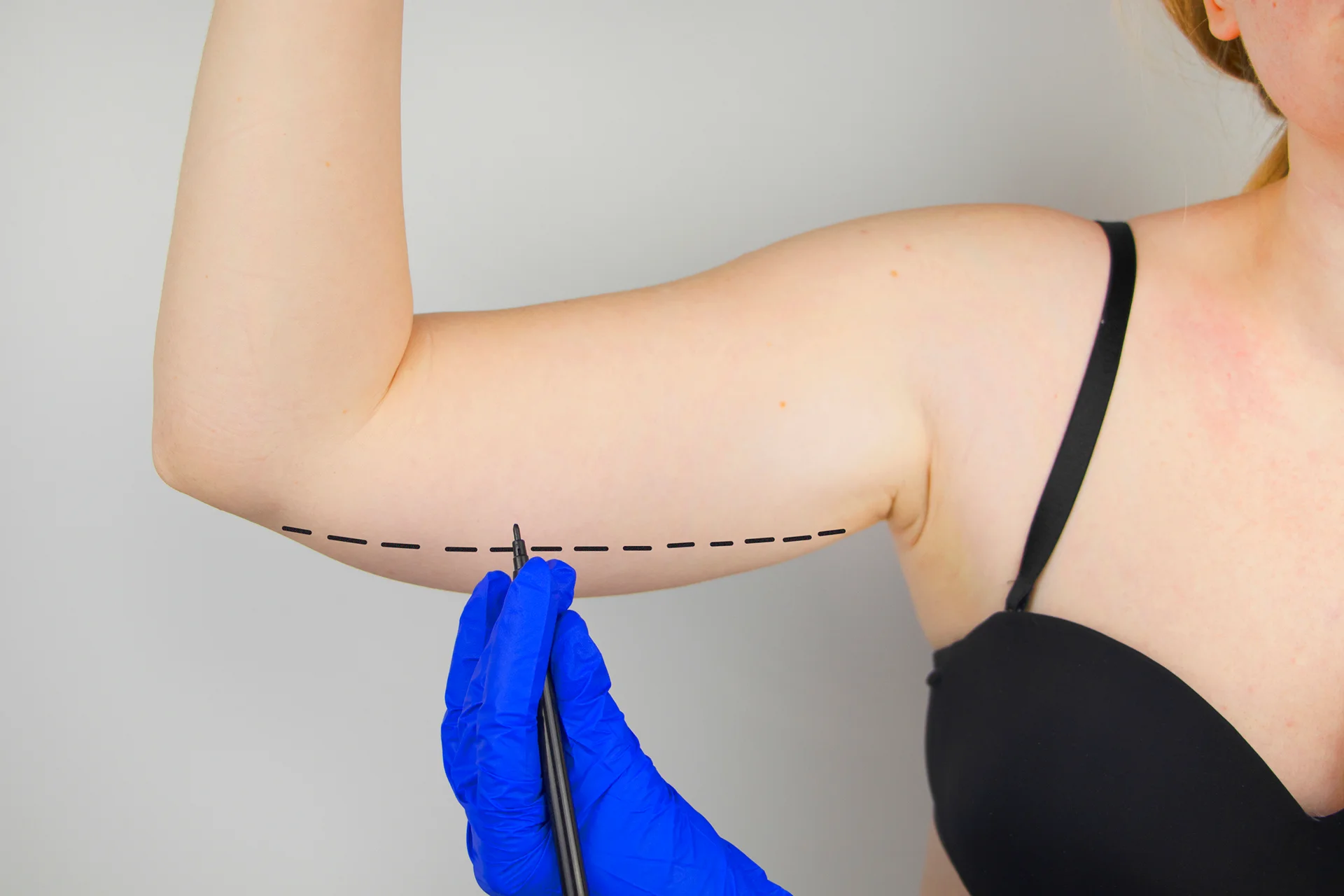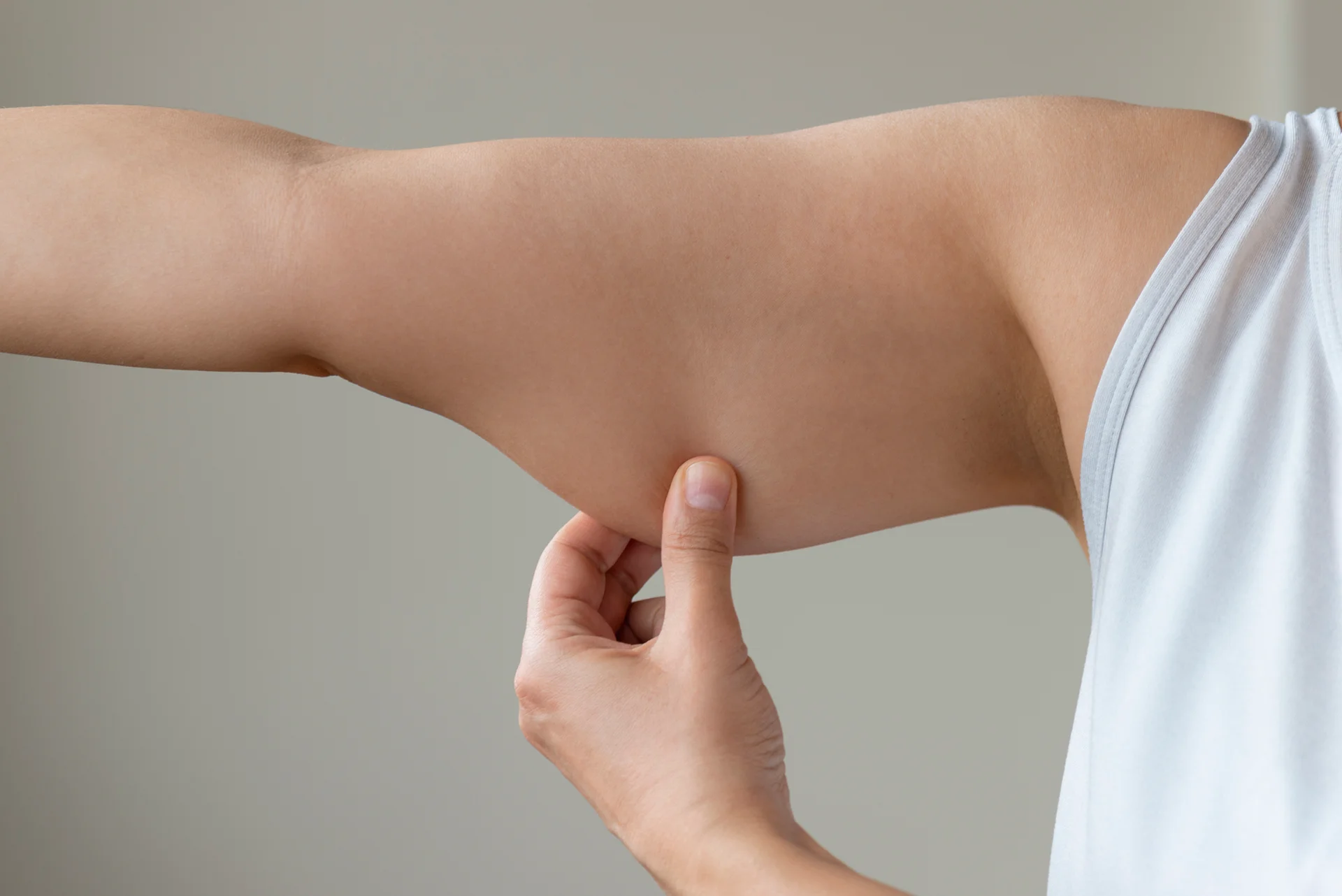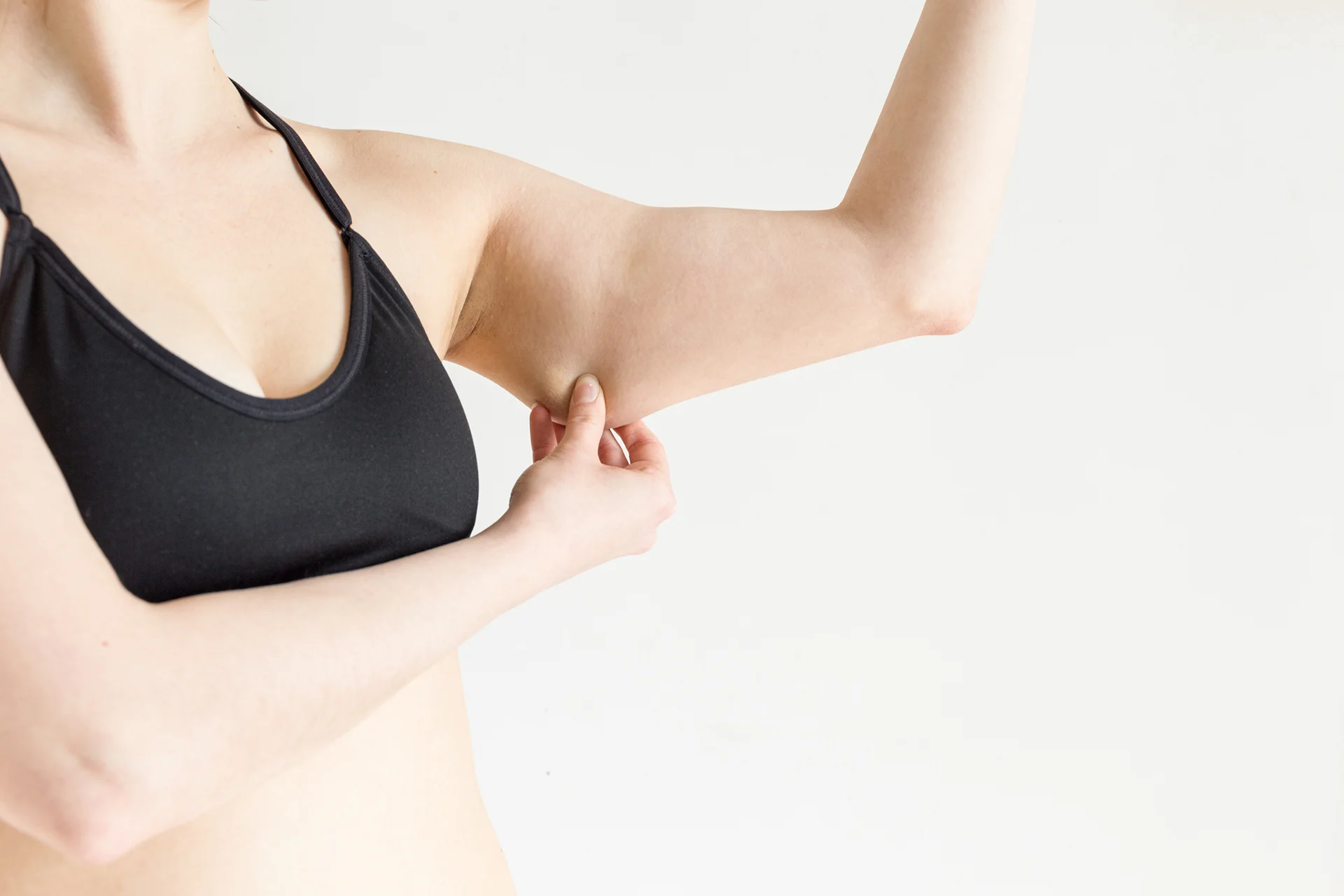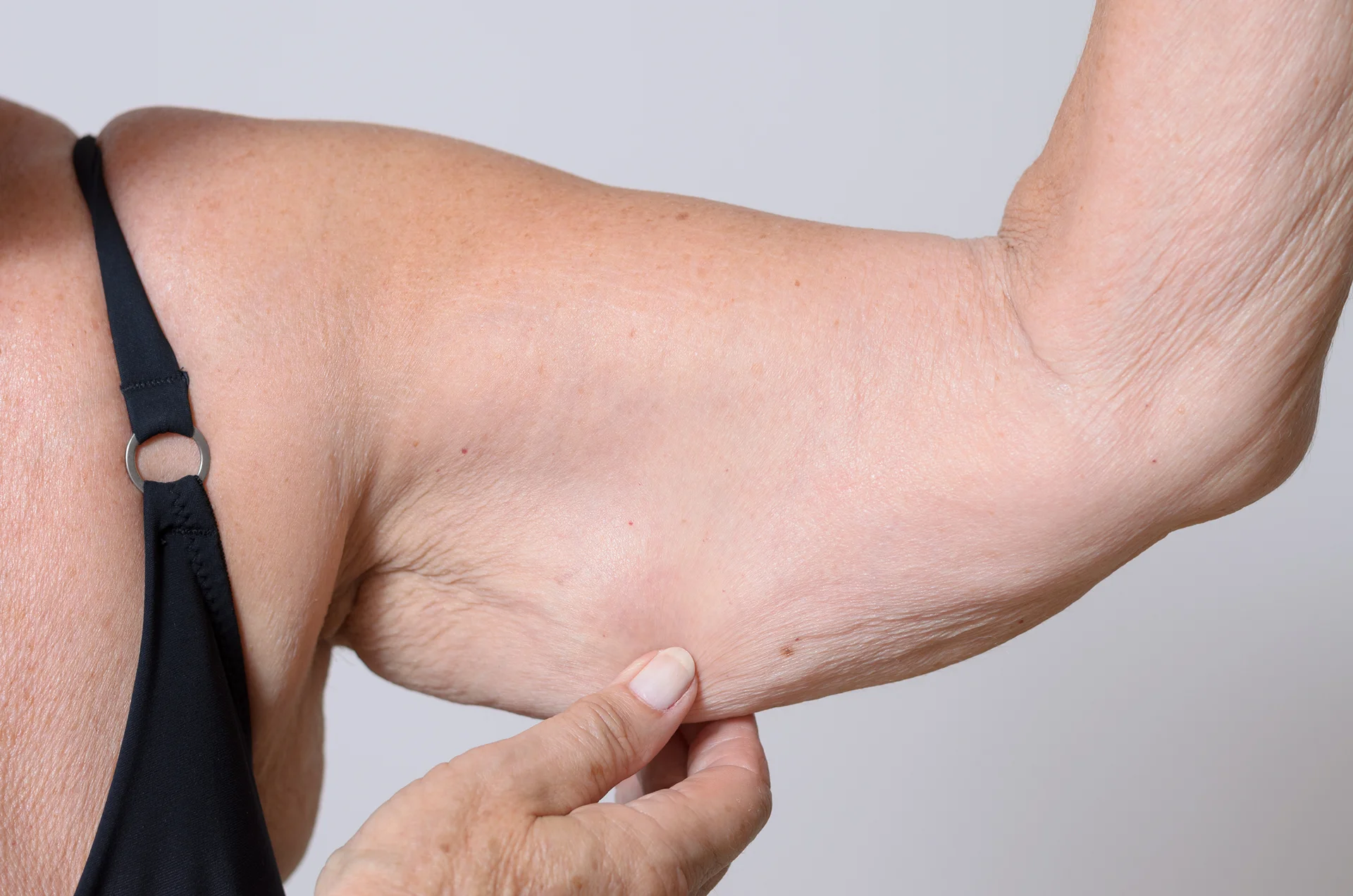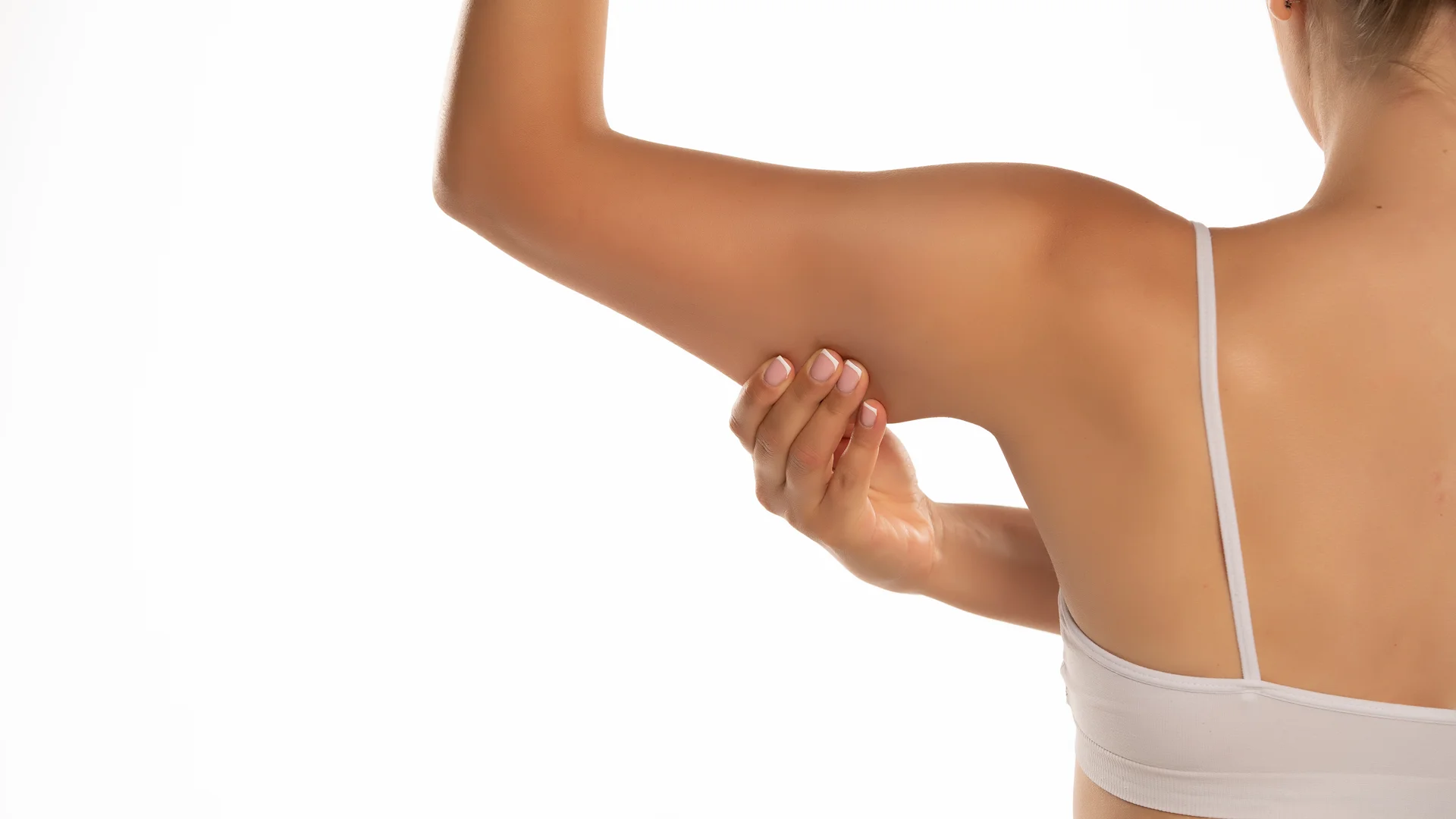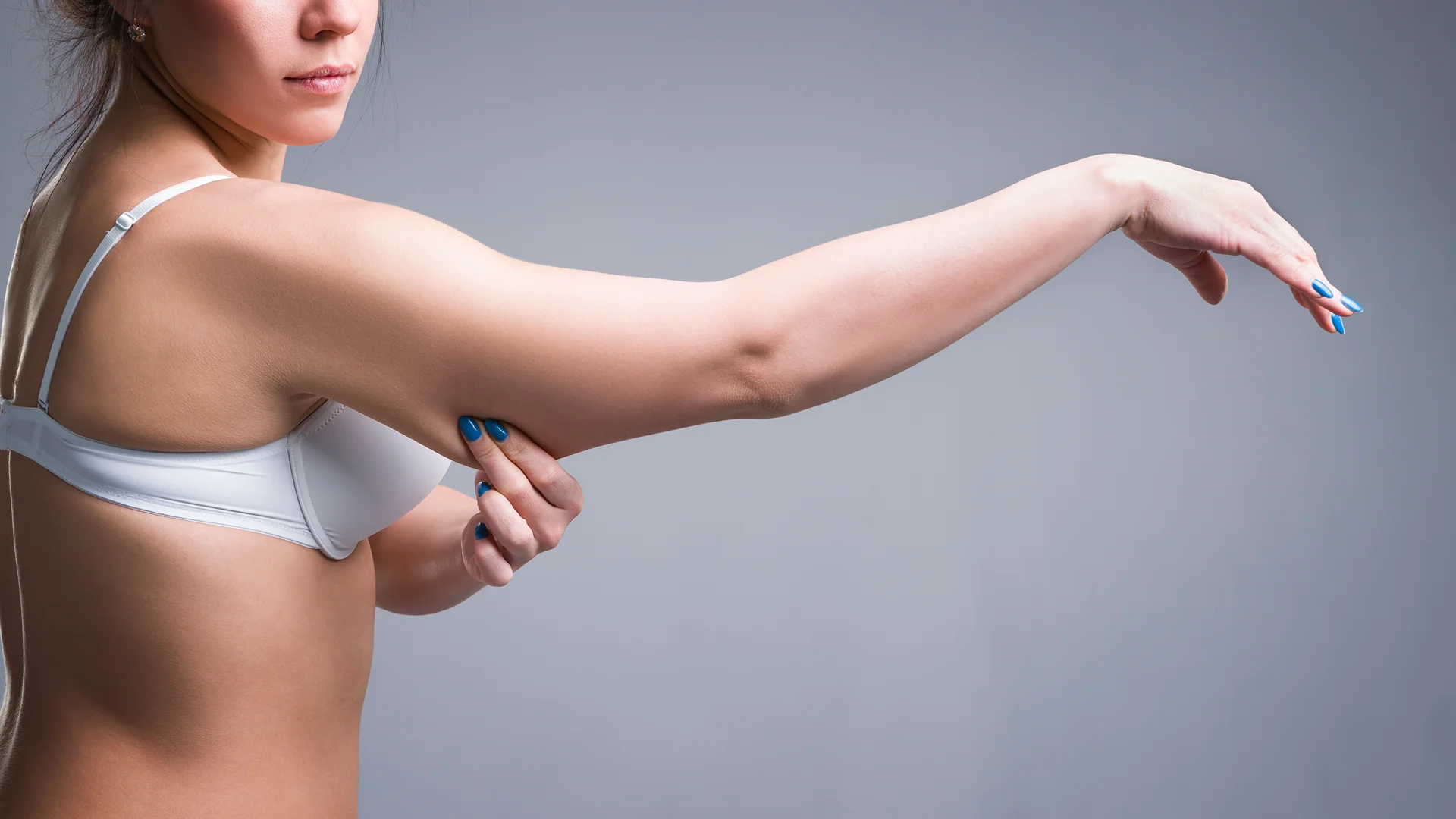Sagging, loose skin on the upper arms is a common concern for many people. While some simply view it as an inevitable sign of aging, for others it can cause significant dissatisfaction and impact body image.
If you’re considering brachioplasty (also known as an arm lift) to tighten and reshape the upper arms, it’s important to understand what the procedure entails along with potential benefits and risks.
What Exactly Is Brachioplasty?
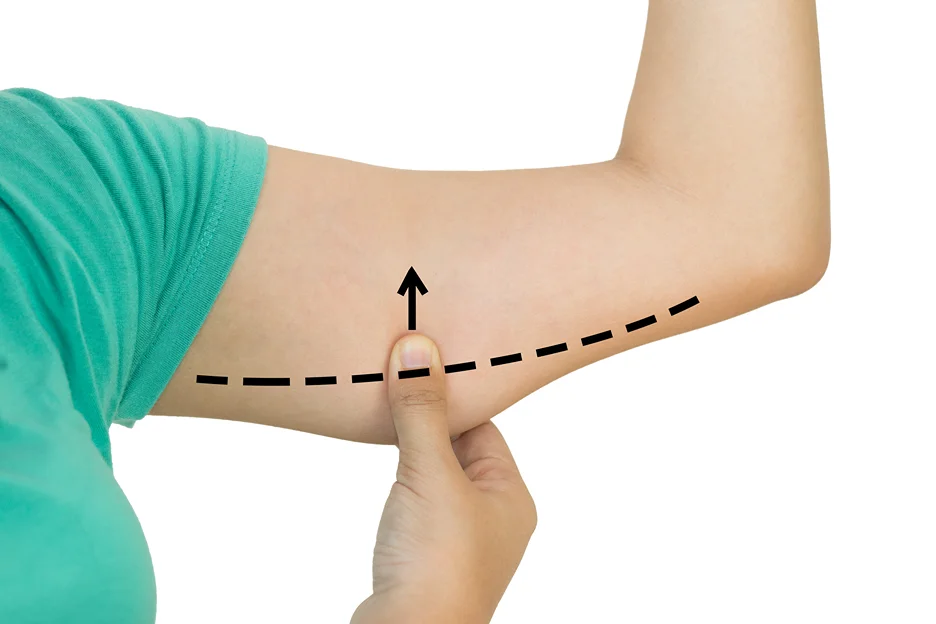
Brachioplasty, commonly known as an arm lift, is a surgical procedure that removes excess skin and fat from the upper arms.
It can dramatically reduce upper arm fullness and improve contour by making the area appear more toned. The procedure essentially “lifts” the arm skin and tissue for a smoother, tighter appearance.
There are a few reasons why patients seek brachioplasty:
- Post-Weight Loss Skin Laxity: After significant weight loss of 50+ pounds, residual loose skin is common on the arms and other body areas. Brachioplasty surgically tightens this lax skin.
- Age-Related Changes: Skin loses elasticity and fat pads bulge as we get older, leaving upper arms looking saggy. Brachioplasty can create a more youthful arm profile.
Ideal candidates for brachioplasty include healthy individuals bothered by excessive upper arm skin who have realistic expectations about the procedure. General health, skin elasticity, and amount of excess arm tissue are factors determining one’s suitability.
Brachioplasty Anatomy 101
Understanding the structures of your upper arm helps visualize how brachioplasty improves its appearance.
| Structure | Description | Role in Brachioplasty |
| Skin | The outer layer of the arm. Prone to sagging with age or weight loss. | Brachioplasty removes excess skin, creating a tighter contour. |
| Subcutaneous Fat | The layer of fat beneath the skin. Can become bulky and contribute to a loose appearance. | Liposuction is often used in conjunction with brachioplasty to reduce fat deposits. |
| Muscles | Structures like the biceps, triceps, and deltoids give the arm its shape. | Brachioplasty does not directly alter the muscles themselves. |
| Nerves & Blood Vessels | These vital structures carry sensations and blood supply to the arm. | A skilled surgeon carefully works around these structures to avoid damage. |
Key Points
- Brachioplasty primarily targets excess skin and fat to create a smoother, more defined arm contour.
- Combining liposuction with brachioplasty is common for optimal results.
- A skilled surgeon understands upper arm anatomy to perform the procedure safely and effectively.
The procedure essentially removes excess skin and fat to reveal the underlying supportive muscles and tighten the area. Minimal impact occurs on nerves or blood flow if performed correctly.
The Potential Risks of Brachioplasty (Arm Lift)
While an arm lift can certainly improve upper arm appearance, as with any surgery, patients should weigh the benefits and potential risks. Some are common to varying degrees while others are unlikely but still possible:
Common Temporary Side Effects
- Scarring: While scars are unavoidable, they typically fade over a year or more. Your surgeon’s techniques and your body’s healing process affect the final appearance
- Swelling: This is normal and peaks a few days after surgery, gradually subsiding over several weeks.
- Bruising Expect some bruising, usually resolving within a few weeks.
- Seroma: Pockets of fluid may accumulate and require drainage, but this is generally a minor issue.
Less Common but Serious Risks
- Nerve damage: While uncommon, this can lead to numbness or altered sensation. Discuss potential nerve locations with your surgeon.
- Poor wound healing: Factors like smoking increase this risk. Your surgeon will assess your overall health and advise you accordingly.
- Blood clots: Although rare, preventive measures are standard to minimize risk.
- Fat necrosis: Occasionally, some fat tissue may die. This often resolves on its own but may require minor intervention.
It’s critical to discuss risks thoroughly with your surgeon as part of the consultation process. Be sure you understand the safety measures taken and your specific risk profile.
What About Post-Op Fat Rolls?
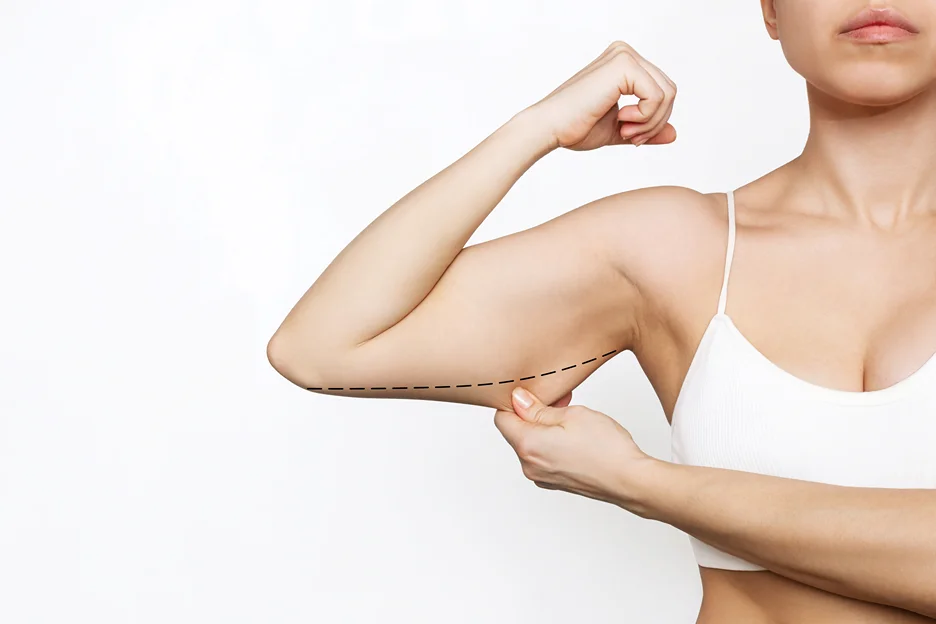
While brachioplasty dramatically improves arm contours, there’s a chance of some remaining fat rolls or bulges. Here’s why this might happen and how to minimize the risk:
Reasons for Post-Op Fat Rolls
- Incomplete Fat Removal: If not enough fat is removed during surgery, noticeable pockets may remain. Liposuction during brachioplasty helps, but a surgeon’s skill greatly impacts thoroughness.
- Weight Gain: Significant weight gain after your surgery can lead to new fat accumulation, even in treated areas.
- Genetics and Body Fat Distribution: Some individuals have a predisposition to store fat in the upper arms, making complete elimination more difficult.
Strategies for Prevention
- Surgeon Selection: Choose a board-certified plastic surgeon with extensive experience in brachioplasty and body contouring, including liposuction techniques.
- Liposuction with Brachioplasty: Discuss combining liposuction with skin removal to ensure maximal fat reduction.
- Weight Maintenance: Maintain a healthy weight after surgery. If you were overweight pre-surgery, continued weight loss can further improve results.
- Realistic Expectations: Brachioplasty offers significant improvement, but some residual fat may be unavoidable depending on your individual factors.
If Fat Rolls Develop
- Consult Your Surgeon: Discuss your concerns with the surgeon who performed your brachioplasty. They may recommend:
- Diet and Exercise: For minor fat accumulation.
- Revision Liposuction: To target specific, stubborn fat pockets.
- Revision Brachioplasty: In rare cases, where significant, new skin laxity occurs with the fat.
Important Note: Every patient has unique anatomy and goals. Open communication with your surgeon is key for understanding your specific risks and achieving the best possible outcome.
Minimizing Risks After Brachioplasty: How to Promote Better Healing
Your actions following brachioplasty play a significant role in managing risks and achieving the best outcome. Here’s how to prioritize your recovery:
- Follow Your Surgeon’s Instructions: Your surgeon will provide detailed post-op care guidelines. Adhere strictly to those instructions regarding wound care, compression garments, activity restrictions, and medication.
- Elevate Your Arms: Keeping your arms elevated above heart level, especially in the early days, helps manage swelling and reduces strain on the incisions.
- Rest and Recover: Your body needs time to heal. Avoid strenuous activity or heavy lifting as directed by your surgeon. Plan for adequate downtime during your recovery.
- Eat a Healthy Diet: Proper nutrition supports wound healing. Focus on whole foods, fruits, vegetables, and adequate protein intake.
- Hydrate: Staying hydrated is crucial for healing and can also help manage swelling.
- Watch for Signs of Complications: Report any unusual redness, increasing pain, excessive drainage, or fever to your surgeon immediately.
Important Note: It takes time for swelling to subside and scars to fade. Be patient with the healing process and communicate any concerns with your surgeon.
Making a Decision: Setting Expectations and Finding the Right Surgeon
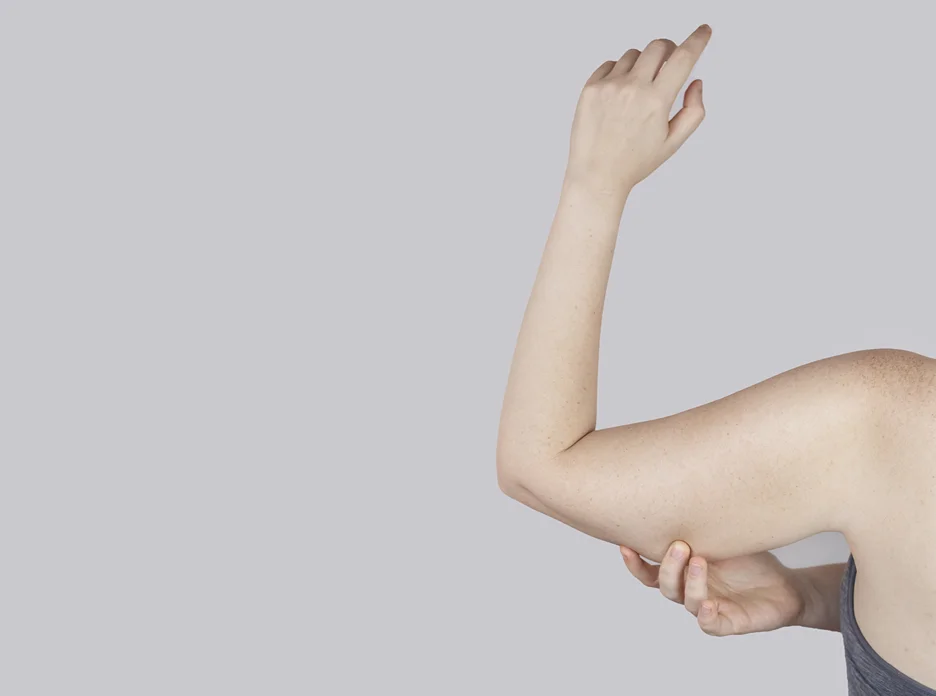
Brachioplasty can significantly improve the appearance of your upper arms, but it’s important to approach the decision with realistic expectations and careful planning. Here’s how to ensure it’s the right choice for you:
Set Realistic Expectations
- Understand the Results: Brachioplasty aims for substantial improvement, not perfection. Some asymmetry between arms is normal.
- Accept the Scars: While scars fade over time, they are a permanent trade-off for tighter arms.
- Be Patient with Recovery: There will be swelling, bruising, and a period of adjustment.
Surgeon Selection is Key
- Credentials Matter: Choose a board-certified plastic surgeon specializing in brachioplasty and body contouring.
- Visual Proof: Ask to see extensive before-and-after photos of their arm lift patients.
- Open Consultation: Prepare a list of questions about their experience, your specific case, potential risks, and realistic outcomes.
The Bottom Line
Brachioplasty can offer a confidence boost and a sleeker arm profile, but it’s essential to understand the commitment involved.If you’re significantly bothered by loose upper arm skin and are a good candidate, thorough research and an experienced surgeon will help maximize your chances of a positive outcome.
